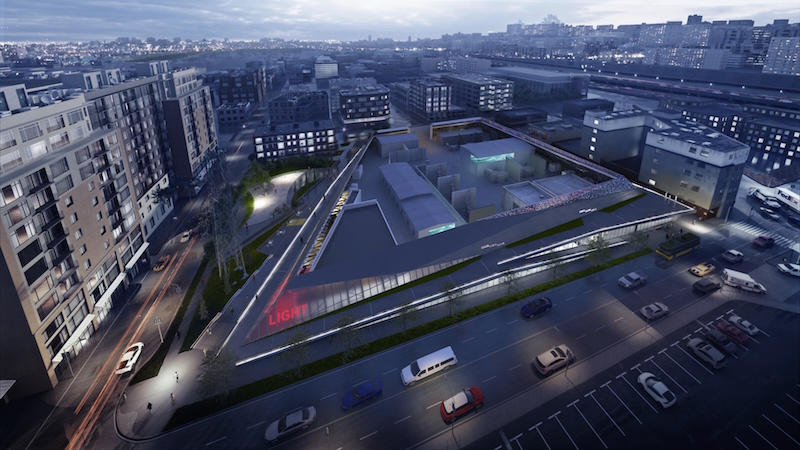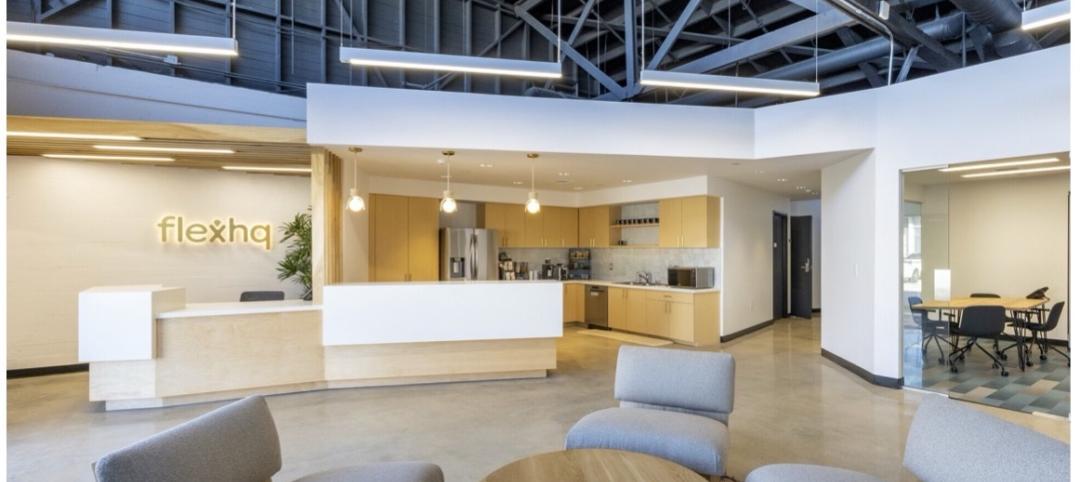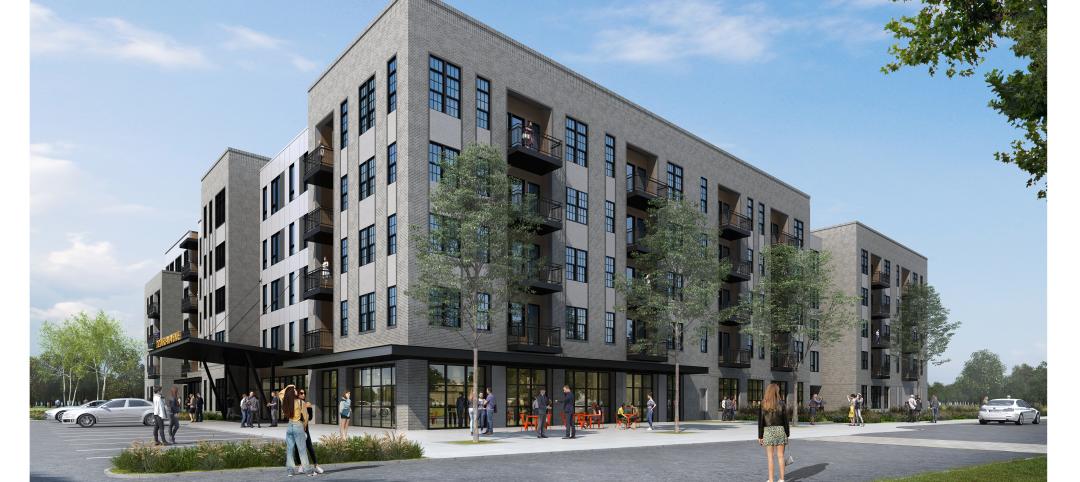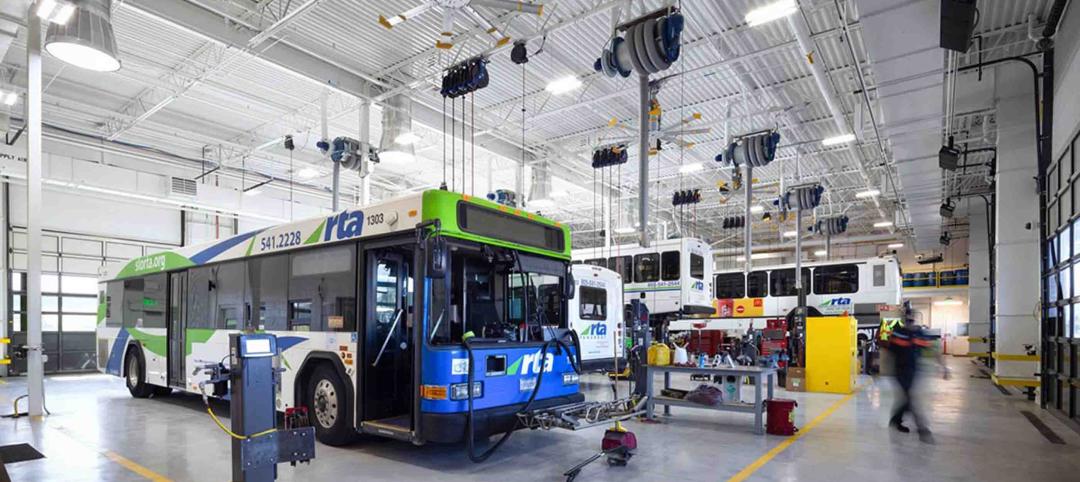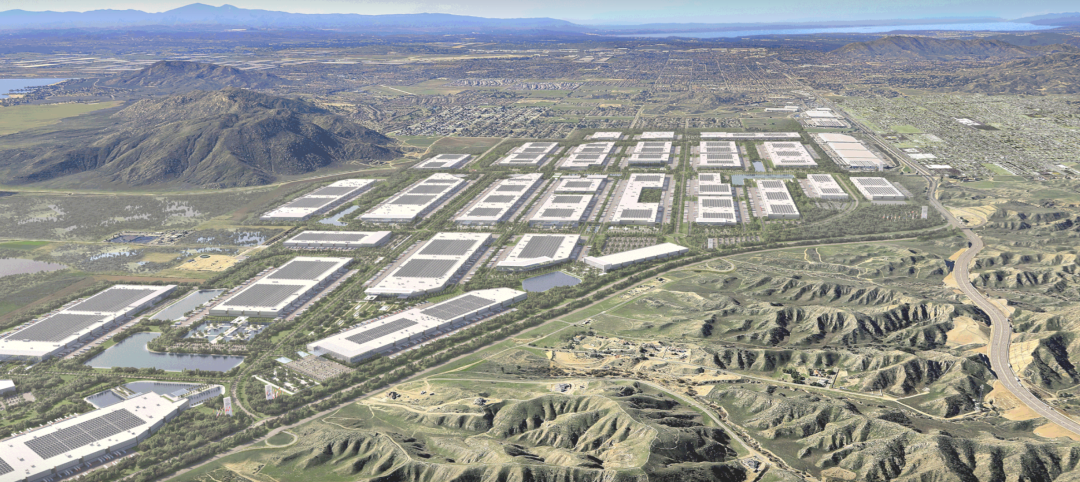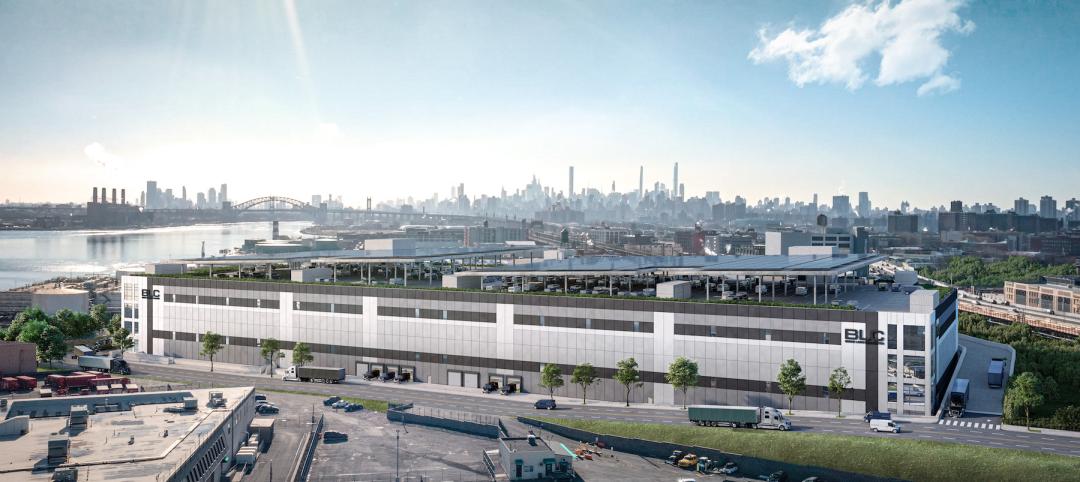Five years ago, it was apparent that Seattle’s urban redevelopment was expanding at a pace that would require more electrical output. Adding urgency to the city’s growth plans was the fact that its aging Broad Street substation was reaching its load limits, and part of that substation’s feeder system would be de-energized over time to accommodate the construction of the Alaskan Way Viaduct replacement tunnel.
Seattle City Light, the city-owned electrical utility, finally got design approval in 2012 for the Denny Substation, which had been in the works for nearly a decade. Soon after, Amazon announced that it would build its massive new headquarters complex along the Denny Way thoroughfare. “That made all of us look smart,” says Michael Clark, PMP, Seattle City Light's Program Manager on the Denny Substation project.
Seattle City Council gave this $209 million substation—the first to be built in Seattle in 30 years—the final go-ahead in August 2015. Construction of the 110,000-sf substation began nine months later on a 120,000-sf lot where a decommissioned Greyhound bus maintenance terminal once stood. Seattle City Light expects Denny Substation to be operating by late 2018.
What makes the Denny Substation different from similar facilities is that it is designed to invite people to the site and offer them recreational activities. The project has 44,000 sf of open space and an off-leash dog park, plus an ADA-accessible quarter-mile walking loop that rises 16 feet above street level to provide pedestrians views of a public park, a landscaped terrace, and the cityscape.
One side of the building will include an area that can accommodate food trucks and other open-space activities. The design incorporates a learning center that provides information about Seattle City Light and how it promotes renewable energy. The substation will be powered by 89.9% hydroelectric energy and 3.9% wind energy, with exhibition and meeting spaces producing more power than they expend.
Metal-clad walls, 35 feet high, slope inward toward the substation, reducing its mass at the pedestrian level. Translucent glass panels will emit a soft glow at night.
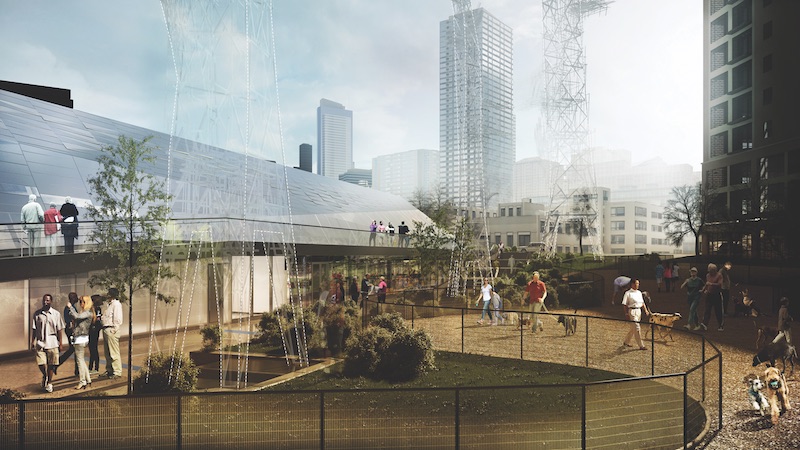 An off-leash dog park at Denny Substation. Project team: NBBJ (architect), Power Engineers (electrical design), KPFF Consulting (SE, CE), Shimmick Construction (underground network distribution system), and The Walsh Group (GC). Image Courtesy NBBJ.
An off-leash dog park at Denny Substation. Project team: NBBJ (architect), Power Engineers (electrical design), KPFF Consulting (SE, CE), Shimmick Construction (underground network distribution system), and The Walsh Group (GC). Image Courtesy NBBJ.
The city mandated that 1% of this project’s budget be spent on public art. Built into the corners of the substation are two commissioned pieces. "Switchwall," by artist Ned Kahn, consists of a series of “switches” that move when the wind blows and turn on different-colored LED lights, creating a moving pattern. "Transforest," by Lead Pencil Studio’s Annie Han and Daniel Mihalyo, is a 120-foot-high tower installed in the open space, which combines the beauty of the Pacific Northwest with the history of local power generation and transmission.
Community input and debate are integral to the city’s design-review process, known as The Seattle Way. “A utility must serve other than just its mission,” explains Clark. The dog park and walkway came out of this process, to provide public offsets for vacating a nearby street.
The site also needed extensive environmental cleanup, which required digging 40 feet below grade to remove soil contaminated by diesel fuel from the bus terminal.
Seattle City Light commissioned NBBJ to design the substation partly because of the firm’s reputation for developing concepts that all stakeholders could embrace. “There was substantial outreach, and we took the opportunity to invite the community into the process,” says Carl Tully, AIA, LEED AP, Principal and NBBJ’s project manager for the substation.
Tully credits Clark, who has been on the city’s redevelopment committee since 2002, with keeping the substation project in play. As for NBBJ’s contribution, he says, “We opened the city’s eyes to what’s possible, not just to cloak or cover up the building, but to make it a point of civic engagement.”
Tully says the design needed to account for “fixed parameters” that include a high-pressure fluid-filled 115-kV transmission cable that runs through the property. Some of the facility’s electrical equipment is quite tall, so NBBJ relocated them to the interior and placed lower equipment to the periphery. This helped reduce the scale of the substation and created opportunities for elevated walkways and occupiable space, says Tully.
He believes the concept for the Denny Substation—taking public infrastructure and creating public space—could be duplicated in other cities. But Clark doesn’t think Seattle will need another substation of this magnitude for some time. “The buildings going up are exercising much better power management, so our load has remained relatively flat,” which also means future revenues could be lower.
Clark suggests that with more cities moving toward microgrids for growing neighborhoods, there could be a need for smaller substations to support them.
Related Stories
Industrial Facilities | Jun 20, 2023
A new study presses for measuring embodied carbon in industrial buildings
The embodied carbon (EC) intensity in core and shell industrial buildings in the U.S. averages 23.0 kilograms per sf, according to a recent analysis of 26 whole building life-cycle assessments. That means a 300,000-sf warehouse would emit 6,890 megatons of carbon over its lifespan, or the equivalent of the carbon emitted by 1,530 gas-powered cars driven for one year. Those sobering estimates come from a new benchmark study, “Embodied Carbon U.S. Industrial Real Estate.”
Industrial Facilities | May 31, 2023
Nascent cowarehousing firm steps forward with facilities that offer a communal user experience
The design firm Ware Malcomb has partnered with FlexHQ, a Los Angeles-based firm offering cowarehouse leasing solutions, to create a scalable workspace that emphasizes leasing flexibility and higher-quality and environmentally friendlier amenities than aren’t commonly found in this building type, say representatives from both companies.
Multifamily Housing | May 12, 2023
An industrial ‘eyesore’ is getting new life as an apartment complex
The project, in Metuchen, N.J., includes significant improvements to a nearby wildlife preserve.
Industrial Facilities | Apr 10, 2023
Implementing human-centric design in operations and maintenance facilities
Stantec's Ryan Odell suggests using the human experience to advance OMSF design that puts a focus on wellness and efficiency.
Warehouses | Mar 29, 2023
Construction completed on Canada’s first multi-story distribution center
Construction was recently completed on Canada’s first major multi-story industrial project, a distribution center in Burnaby, British Columbia. The project provides infrastructure for last-mile delivery in a world where consumers have come to expect next-day and same-day delivery, according to Ware Malcomb, the project's architect of record.
Industrial Facilities | Mar 6, 2023
The largest planned logistics and business park in North America gets under way in Southern California
The $25 billion World Logistics Center will boost the supply chain capabilities of Southern California and will serve as a distribution center for destinations across the continent.
Intelligent Lighting | Feb 13, 2023
Exploring intelligent lighting usage in healthcare, commercial facilities
SSR's Todd Herrmann, PE, LEEP AP, explains intelligent lighting's potential use cases in healthcare facilities and more.
Giants 400 | Feb 9, 2023
New Giants 400 download: Get the complete at-a-glance 2022 Giants 400 rankings in Excel
See how your architecture, engineering, or construction firm stacks up against the nation's AEC Giants. For more than 45 years, the editors of Building Design+Construction have surveyed the largest AEC firms in the U.S./Canada to create the annual Giants 400 report. This year, a record 519 firms participated in the Giants 400 report. The final report includes 137 rankings across 25 building sectors and specialty categories.
Giants 400 | Feb 6, 2023
2022 Telecommunications Facility Sector Giants: Top architecture, engineering, and construction firms in the U.S. telecommunications facility sector
AECOM, Alfa Tech, Kraus-Anderson, and Stantec head BD+C's rankings of the nation's largest telecommunications facility sector architecture, engineering, and construction firms, as reported in the 2022 Giants 400 Report.
Industrial Facilities | Dec 21, 2022
New York City’s largest industrial building is nearing completion
The multistory facility is arriving at a time when space remains at a premium.


